- Anthony D'Amico
- Albums and Singles
 Newly remastered by Rashad Becker and given a vinyl reissue, Relentless Trills first surfaced on cassette as part of Boomkat's eclectic Documenting Sound series devoted to home recordings made during the pandemic. Given those origins, it makes sense that this full-length debut showcases a very different side of DJ Plead's artistry than his impressive run of oft-killer EPs. Given that, curious listeners intrigued by the Australian producer's unique blend of cutting edge UK dance subgenres with Middle Eastern influences like dabke and mahraganat should probably head to 2020's Going For It EP first to experience the "out-of-control Lebanese wedding party" brilliance of prime DJ Plead before exploring this inspired detour. That said, this surprisingly experimental, stripped-down, and post-punk-adjacent departure from his strengths is quite a compelling listen in its own right. Boomkat's description rightly tosses around adjectives like "humid" and "sensual" to describe this bedroom DIY fantasia of floating Middle Eastern melodies and languorously simmering grooves, but that does not paint the entire picture, as Relentless Trills also masterfully dips its toes in hazy psychedelia, plunderphonics, and a hauntingly beautiful beatless synth piece. The latter ("RT6") unexpectedly steals the show, as DJ Plead (Jarred Beeler) has a remarkably great ear for melody and atmosphere, yet this entire release is quite a singular, propulsive, and (of course) sensually humid experience from start to finish.
Newly remastered by Rashad Becker and given a vinyl reissue, Relentless Trills first surfaced on cassette as part of Boomkat's eclectic Documenting Sound series devoted to home recordings made during the pandemic. Given those origins, it makes sense that this full-length debut showcases a very different side of DJ Plead's artistry than his impressive run of oft-killer EPs. Given that, curious listeners intrigued by the Australian producer's unique blend of cutting edge UK dance subgenres with Middle Eastern influences like dabke and mahraganat should probably head to 2020's Going For It EP first to experience the "out-of-control Lebanese wedding party" brilliance of prime DJ Plead before exploring this inspired detour. That said, this surprisingly experimental, stripped-down, and post-punk-adjacent departure from his strengths is quite a compelling listen in its own right. Boomkat's description rightly tosses around adjectives like "humid" and "sensual" to describe this bedroom DIY fantasia of floating Middle Eastern melodies and languorously simmering grooves, but that does not paint the entire picture, as Relentless Trills also masterfully dips its toes in hazy psychedelia, plunderphonics, and a hauntingly beautiful beatless synth piece. The latter ("RT6") unexpectedly steals the show, as DJ Plead (Jarred Beeler) has a remarkably great ear for melody and atmosphere, yet this entire release is quite a singular, propulsive, and (of course) sensually humid experience from start to finish.
This album instantly won me over within the first moments of its endearingly weird opener, which ingeniously marries a very insistent and ‘80s-sounding "funk punk" bass line with samples from some kind of Middle Eastern talk show. There is also a cool Arabic synth melody running throughout the song, but my favorite part is how the talk show keeps unpredictably being autotuned into ephemeral melodies. Talk show samples aside, "RT1" is fairly representative of the entire album, as nearly all of the sounds originate from the same Yamaha 'Oriental' keyboard. Beeler's amusingly self-deprecating liner notes also state that he recorded lots of "self-indulgent melodic hooks" and initially set out to make a drum-less ambient album of sorts. At some point, he changed his mind and added some simple rhythmic accompaniment ("I'm praying that this tape doesn't sound like Deep Forest") and ultimately landed upon something that resembles Gang of Four backing a virtuosic Middle Eastern wedding musician. Notably, those "self indulgent" melodies are the best part of the album, as every song has some kind of wonderfully smoky, winding, or soulful hook that fluidly unfold over an obsessively repeating staccato groove (often dancehall-inspired, but more stark and thudding). That "staccato" bit was an odd choice given how adept DJ Plead has been at unleashing vibrant and complex rhythms in the past, but the songcraft is strong enough to make it work despite that (it feels akin to watching a boxer handily demolish an opponent with one hand tied behind his back). That said, "RT3" feels like an instant highlight primarily because the groove is allowed to flow a bit more than usual. Then again, the closer dispenses with a beat altogether to combine a dreamily fluttering melody with a pulsing chord progression that feels like a psychedelically deconstructed house classic and it is absolutely gorgeous. There is not a weak piece in the bunch though, as DJ Plead's melodic and songcraft instincts are remarkably unerring. I cannot even begin to imagine how great the resultant album would be if he ever figures out how to seamlessly combine this side of his work with his usual rhythmic intensity.
Samples can be found here.
Read More
- Administrator
- Albums and Singles
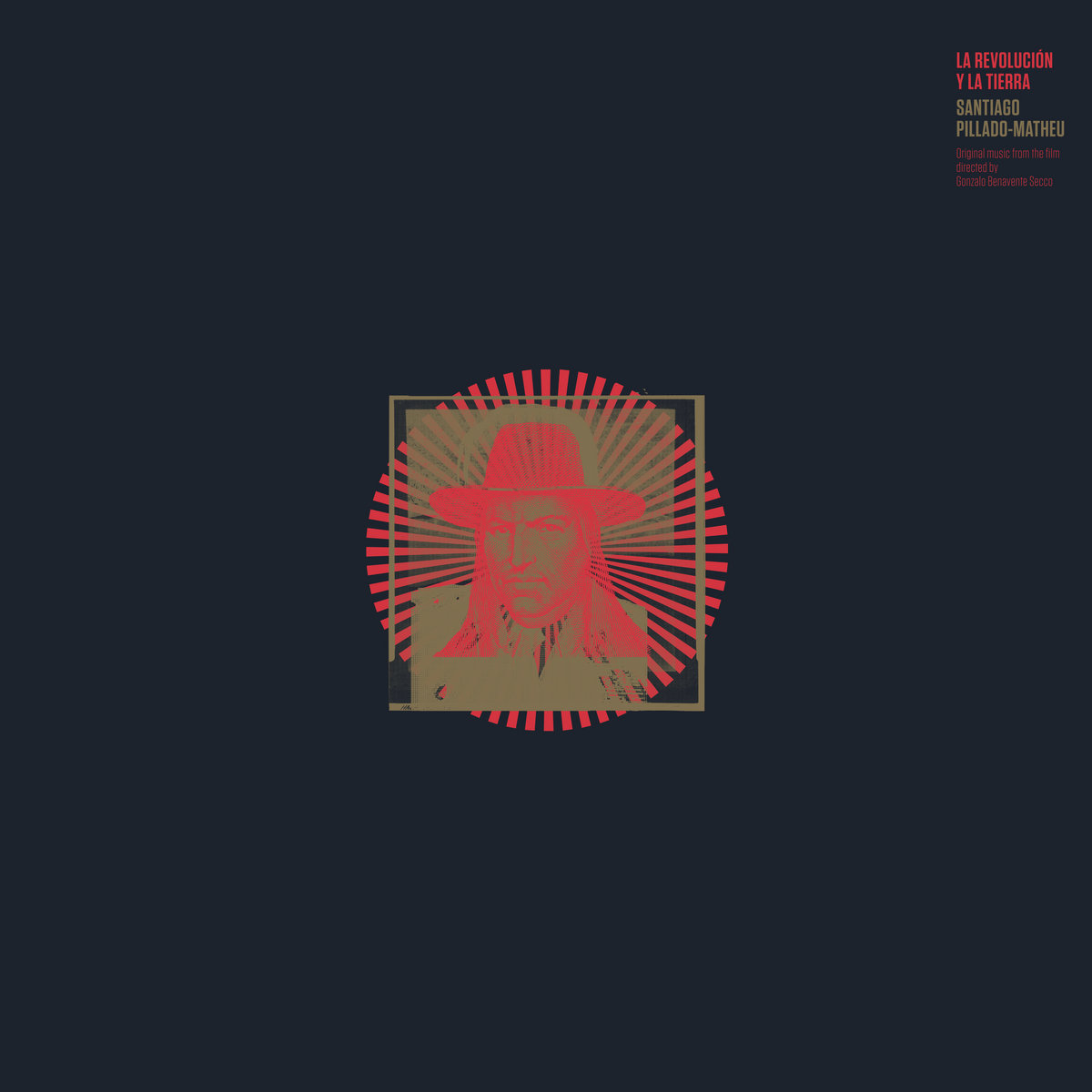 In Peru, Gonzalo Benavente Secco’s controversial documentary La revolución y la tierra, has drawn huge cinema audiences, perhaps because its subject, the 1969 Land Reform Act, still bitterly divides opinion more than fifty years later. So much so that TV Peru bowed to pressure and refused to broadcast the film, which skillfully folds scenes from old Pervuian films into the mix, in the run up to the elections of 2021. Santiago Pilado-Matheu’s deceptively simple soundtrack uses ambient electronics, loops, dubby Afro-Latin rhythms, Andean drone and melody, film dialogue, and speech excerpts by peasant leaders, to create a comforting yet sinister landscape of memory.
In Peru, Gonzalo Benavente Secco’s controversial documentary La revolución y la tierra, has drawn huge cinema audiences, perhaps because its subject, the 1969 Land Reform Act, still bitterly divides opinion more than fifty years later. So much so that TV Peru bowed to pressure and refused to broadcast the film, which skillfully folds scenes from old Pervuian films into the mix, in the run up to the elections of 2021. Santiago Pilado-Matheu’s deceptively simple soundtrack uses ambient electronics, loops, dubby Afro-Latin rhythms, Andean drone and melody, film dialogue, and speech excerpts by peasant leaders, to create a comforting yet sinister landscape of memory.
My off-the-cuff knowledge of Peru consists of four facts. Michael Bond’s fictional bear Paddington came from "darkest Peru" and legendary broadcaster John Peel died on holiday there. It was the location for Werner Herzog's Aguirre: The Wrath of God, filmed on the stone steps of Huayna Picchu, on tributaries of the Amazon river, and in the Peruvian rainforest. Herzog claims to have written the screenplay in less than three days, mostly on a long bus trip with his soccer team - one of whom vomited on several pages which Herzog had to discard. Lastly I recall Peru’s Teofilo Cubillas, in hs nation's fabulous white kit with diagonal red slash, smashing in a wicked free kick with the outside of his right foot, the first of his two goals that vomited on Scotland’s hubris at the 1978 World Cup.
Of course, the opening scene from Aguirre is arguably the prime example of music—Popol Vuh's moog and "choir organ" masterpiece—matched to film. While I don't yet know how well this music fits into La revolución y la tierra, it is an enjoyable album which actually got me reading about Peru's agrarian reform of 1969. Critiques of the reform are varied and complex: an overhaul of the previous unfair system - a legacy of Spanish colonialism - was needed, it was wrong to compensate owners for the land nationalization, it was a mistake to let bureaucrats oversee the process, and predictably foolish to disregard the voices of peasants especially in coastal areas, full consideration should have been given to the differing quality of the land, the reform had lasting consequences (intended or unintended) which were bad, or good but limited, US influence was unhelpful, reform changed nothing, grievances deepened perhaps leading to the formation of the Shining Path terror group, and so on. Opinion of the documentary is also divided: an airbrushing of Juan Velasco Alvarado's military dictatorship, the blend of popular culture and historically significant images recalls Adam Curtis's approach, there is too much reliance on academics, a few snippets of peasant leaders are heard but once again the voices of ordinary peasants are ignored, and so on.
However, this amazing soundtrack ought to be a point of consensus. From the opening heartbeat-like drum on "1968," Pilado-Matheu's approach is uncluttered and generates a sense of foreboding, of lurking violence, of struggle and regret. "Chambi" is one of several slow-paced instrumentals; it is simple and affecting, twinkling and creaking as if glued together from bells and the sound of coffin lids being pried open. "Asesinato en el colegio" is one of only two tracks lasting much beyond four minutes and is the most "rocking" piece, with a repetitious clang and thumping drive reminiscent of Savage Republic. By contrast the four tracks entitled "Teirra" are more fluid. "Tierra 3" is lilting and haunted; it sparkles, trickles along and loops around like water irrigating a parched field. "Popachorao" is cool and spacy, with shuffling rhythm and twinkling sunspot electronics. "Cumbia" begins with a clip of a speech, then settles into a funky dub with unsettling percussive aspects. "Funeral" follows and the gritty scraping synth tone and sombre flute (or pipe) brings to mind a shovel and a lone bugle salute. "Tierra 4" seems plucked and tapped on twangy junkyard instruments as it extends the doleful mood of both absence and belonging. Finally, "Obetura" is a dirge-like piece, with sparse bleeps and synths sounding rather like a breeze blowing through trees and echoes of a thunder storm. I pretentiously imagine a slowed cassette tape accompanying flickering images of a battered army retreating a battle many years earlier, or people trudging from a cinema, feeling a mix of rebirth and defeat, but perhaps not resolution.
Peru has now elected rural teacher Pedro Castillo as President. He is the son of peasant farmers who never learned to read or write. He has never previously held any public office and has declined to live in the Presidential palace. Maybe he enjoys film and knows that Peru's record label Buh continues to release genre-defying music. Land reform does not sound too glamorous a topic for a movie, but then again neither did striking miners or Algerian independence and Harlan County, USA and The Battle of Algiers are riveting cinematic masterpieces. Certainly this intriguing soundtrack makes me want to see La revolución y la tierra.
Read More
- Administrator
- Albums and Singles
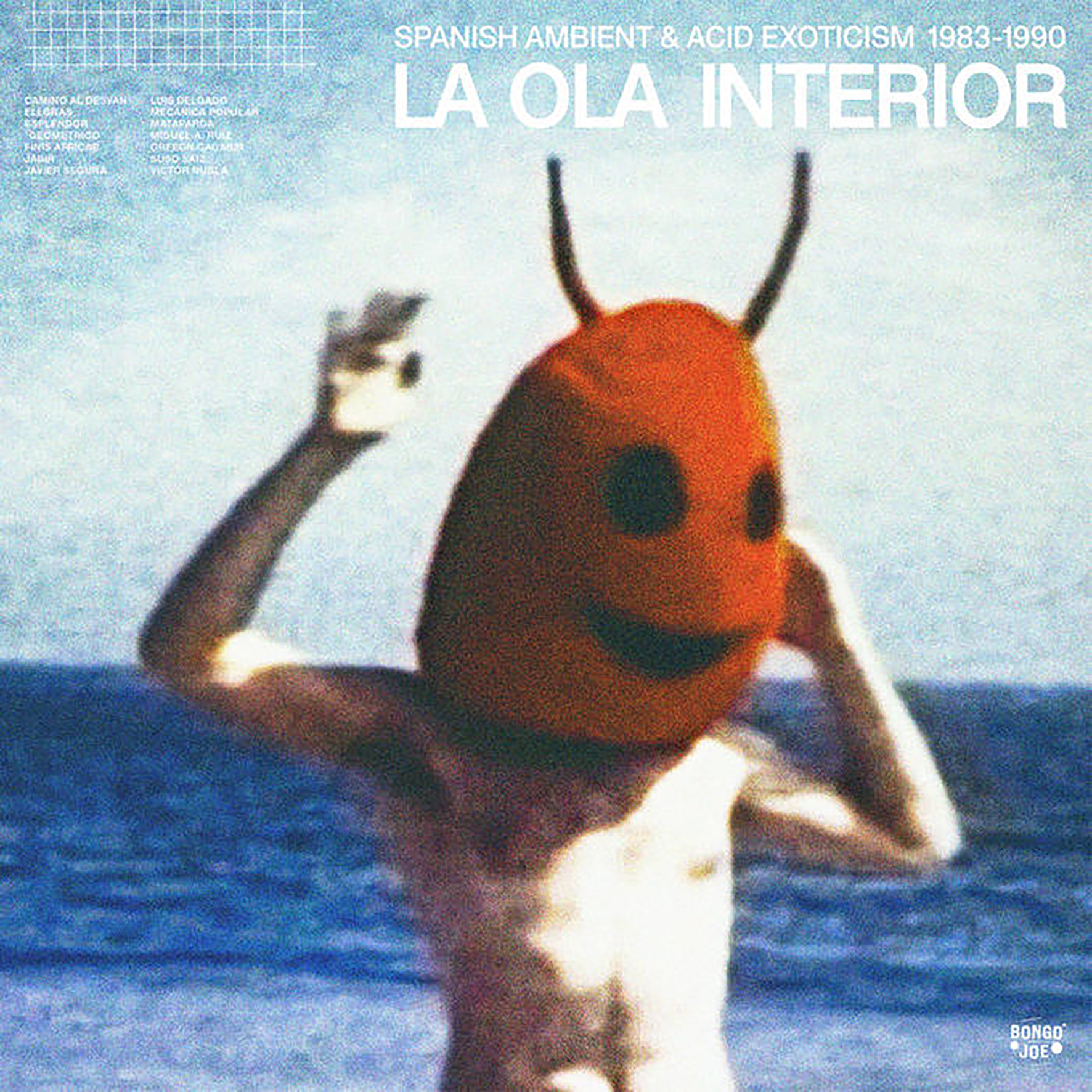 Since the invention of cassette tapes, every country has had its own independent tape scene—whether independent musicians with limited release output via the medium or distributors sharing music under harsh conditions. Spain is particularly distinct in this time since, following the death of dictator Francisco Franco the prior decade, the country's creative class was reawakened and allowed to flourish. This tasty compilation from Swiss label Bongo Joe harnesses this movement, focusing on an array of Spanish and Spanish-related electronic music released between 1983 and 1990 that bleeds exoticism rooted in ambient investigations. The compilation succeeds at painting a picture of a lesser-known world of Balearic mysticism with Ibiza-influenced beats and treatments.
Since the invention of cassette tapes, every country has had its own independent tape scene—whether independent musicians with limited release output via the medium or distributors sharing music under harsh conditions. Spain is particularly distinct in this time since, following the death of dictator Francisco Franco the prior decade, the country's creative class was reawakened and allowed to flourish. This tasty compilation from Swiss label Bongo Joe harnesses this movement, focusing on an array of Spanish and Spanish-related electronic music released between 1983 and 1990 that bleeds exoticism rooted in ambient investigations. The compilation succeeds at painting a picture of a lesser-known world of Balearic mysticism with Ibiza-influenced beats and treatments.
Disc one of this two-disc compilation opens with the hypnotic ambient piece "Transparent" by Miguel A. Ruiz and ends with the fantastic "Trivandrum" by the same. It was "Trivandrum" that immediately caught my attention, sampling what appears to be video game audio over a majestic electronic loop of drums and bass. Both tracks are taken from the 1986 release Climatery but sound tremendously fresh yet today. Since the early eighties, Madrid musician Ruiz has worked under various names (Técnica Material, Orfeón Gargarín, Codachrom, Dekatron II, Michel Des Airlines, Funeral Souvenir, more) yet seems to be little known outside of his native country. Similarities to early O Yuki Conjugate exist, making use of mantric loops and tribal elements founded on a futuristic backdrop. Ruiz is a repeat name, along with Barcelona native Victor Nubla (1956-2020), the more well-known of the two. Nubla's "Chandernagor" is present, showcasing modulated clarinet for which he was known, as well as "20000 Lenguas" ("20,000 languages"), which puts his synthesizer work on display in a clangorous chorus of vocals.
One could easily follow up Esplendor Geométrico's "Sheikh" with Cabaret Voltaire's "Three Mantras," so strikingly similar is the intro to it. Indeed, the band formed in 1980 from the ashes of El Aviador Dro y sus Obreros Especializados who found their start following an advertisement specifically requesting musicians who liked Throbbing Gristle, Cabaret Voltaire, and The Residents. This track consolidates the best of all three groups and is worth the price of admission alone, but the album continues to dole out gems. The majestic "Hybla" from Finis Africae serves as a glorious finale to an imaginary film, a scene instantly crafted in the listener's mind's eye, backed by tribal drumming and chanting that creates a timeless audio-visual experience worthy of repeat listenings. Javier Segura's "Malagueñas 2" offers a rhythmically modern interpretation of a traditional style of Andalusian music (flamenco) that typically is not danced to, having no regular rhythmic pattern ("cantes libres" or "free song"). Utilizing its already rich melody, version 2 leverages the song's typical rich flourishes and microtones not typically found in Western tuning, elements extracted and merged with ethereal, rhythmic guitar and synthesized vocals resulting in a drawn-out and hypnotic dream sequence.
Other standout tracks include Luis Delgado's "El Llanto De Nouronihar," with its ethereal ambiance and ghostly, modulated vocals interspersed with synthetically treated western (violin) and exotic instruments. The space-age modulations of Suso S√°iz, using sequencers and theremin on "Horizonte Paseo" ("Horizon Walk"), find balance with bells and ancient-sounding stringed instruments, along with the everyday sounds of children playing. Camino Al Desvan's "Fock Intimida A Gordi" draws distinct comparisons to The Residents ("Hello Skinny"). Conversely, Jabir's aptly named "Vuelo Por Las Alturas De Xauen" ("Flight Through the Heights of Chefchaouene") with flute and looped Spanish guitar feels as if the listener is gliding over the famous "blue city," itself a popular area for Spanish tourists.
A few tracks sound a bit more dated but no less intriguing, such as Orfeon Gagarin's "Última Instancia" and Mataparda's "Me Llena La Cachimba." In contrast, Mataparda's "La Papa Suave" ("The Soft Potato") modulated use of bells and xylophone make it the preferred choice from the group. There are no wrong choices here, however. This is a cohesive, if limited, snapshot of a fruitful movement from a nation emerging from a time of tumult and finding the freedom to experiment; radical music for radical times. All artists in this release are worthy of further investigation, particularly Miguel A. Ruiz, Esplendor Geométrico, Finis Africae, and Javier Segura.
Samples can be found here.
Read More
- Administrator
- Albums and Singles
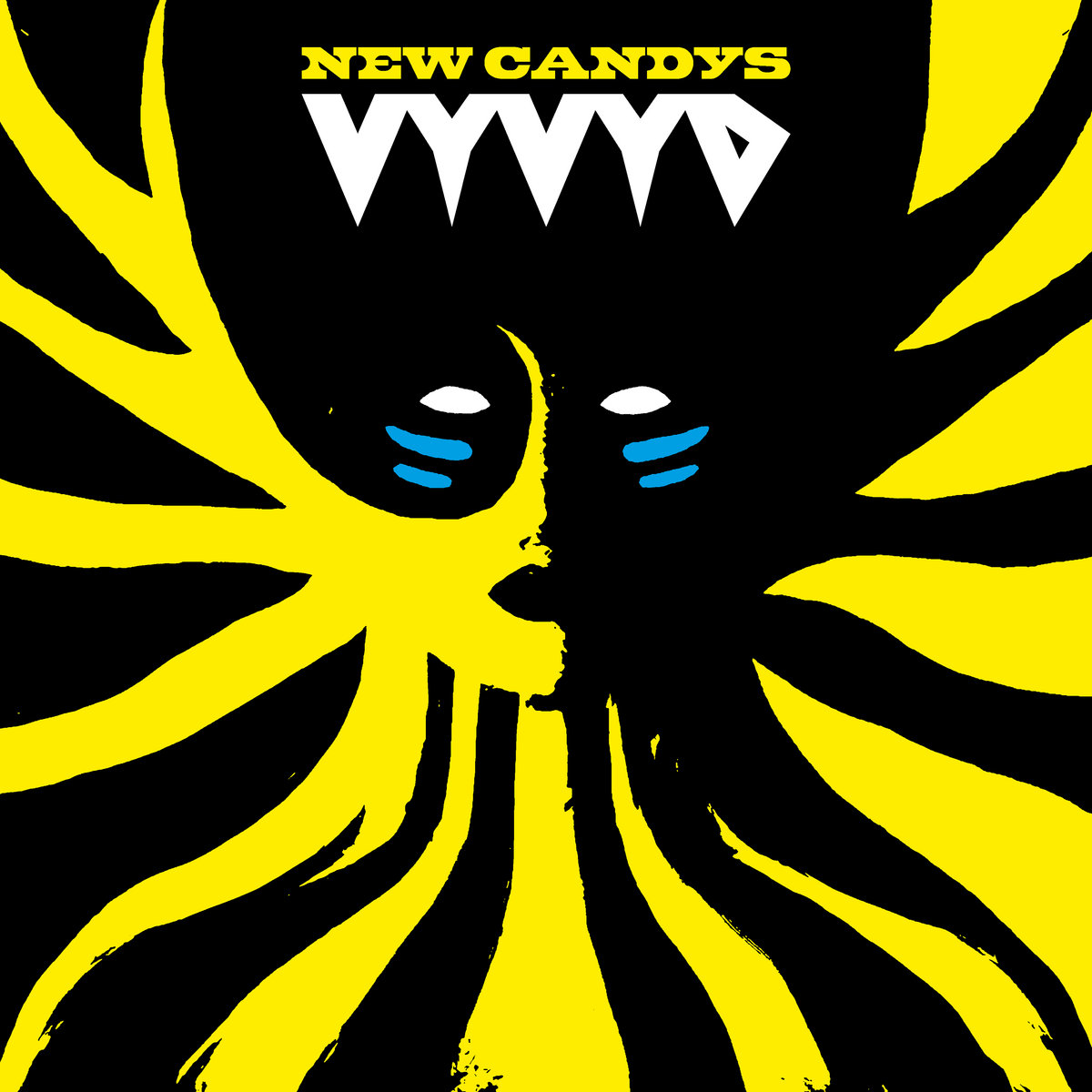 The latest from Italy's New Candys blasts immediately from the gate with an ear-candy combination of pulsating synth and massive drums, bass to match, and world-weary vocals before exploding into millions of crystalline guitar chords coated in fuzz-drenched reverb, resulting in what is quite possibly the most danceable tune the group has ever crafted. All the psyched-out power of prior releases exists, but their fourth full-length comes with the added bonus of cleaner production, allowing the powerhouse rhythm section to step forward amidst what feels to be a recharged songwriting team. Vyvyd becomes less a title and more an experience.
The latest from Italy's New Candys blasts immediately from the gate with an ear-candy combination of pulsating synth and massive drums, bass to match, and world-weary vocals before exploding into millions of crystalline guitar chords coated in fuzz-drenched reverb, resulting in what is quite possibly the most danceable tune the group has ever crafted. All the psyched-out power of prior releases exists, but their fourth full-length comes with the added bonus of cleaner production, allowing the powerhouse rhythm section to step forward amidst what feels to be a recharged songwriting team. Vyvyd becomes less a title and more an experience.
Little Cloud / Dischi Sotterraneie
Not to be outdone by drum-heavy opening track "Twin Mine," New Candys get down to business immediately on "Evil Evil," with a pounding drum machine joined by real drums before distorted vocals and amped-up guitars complete the richly beautiful noise. Despite the increased use of drum machine, reverb lovers will be richly satisfied across the album, especially on the heartfelt "Begin Again," a song steeped in love and longing: "There I go, once again / Inside your head I will end / Where lives the love we once had / Which now belongs somewhere else." Tracks "Vyvyan Rising" and "Helluva Zoo" favor reverb and jangle over an overpowering rhythm, both allowing vocal harmonies and guitar interplay to take front and center. "Q&K" adds female vocals into the mix, guitar at the forefront, drums pulled back into the mix, and rhythm slowed to create a dreamy incorporeal haze.
While the hallmark of much of New Candys' output is intended to be mutable by their psychedelic nature, the band has tightened many of their musical ideas into cohesive concepts. They make great use of namesake elements on "The Clockmaker"— the ticking sound of a clock, a persistently timed rhythm — before changing rhythm and breaking out of the pattern in a gesture to the impermanence of time. "Now every clock of mine is ticking out of time / It's way too late, we're all too late." Closing track "Snake Eat Snake" is reminiscent of the ancient symbol of the ouroboros, usually a snake and sometimes a dragon eating its own tail, that alternately symbolizes the enteral cyclic renewal ("Bring down the light / Warm us inside / Want to get by till we die"), the transmigration of souls ("Down to the hole, there is no one inside it / Want to get home, there is no one to take me / Bound by the snake from below / Is she coming out with me? / Down in the hole, where no souls are invited"), or fertility.
According to the album's Bandcamp page, the band supposedly steeped Vyvyd in "religious, pagan and archetypal symbols," and a keen listener can have fun searching for these. None of it is necessary since the sound as a whole is wonderfully bewitching on its own. Lyrically, nothing here is Shakespeare, but great melodies, fuzz-drenched reverb, tuneful hooks, and beautiful instrumentation make it poetry of its own.
Sound samples may be heard here.
Read More
- Administrator
- Albums and Singles
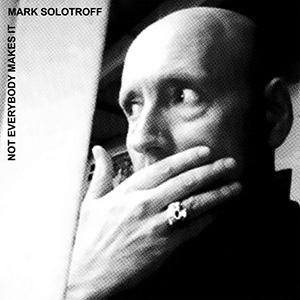 Mark Solotroff could never be accused of taking it easy when it comes to music, both in terms of style and productivity. Since the beginning of 2020 he has been responsible for three side project releases (Nightmares, The Fortieth Day, and Ensemble Sacrés Garçons), two archival releases from his early Intrinsic Action band, and just a matter of weeks ago a BLOODYMINDED! live compilation. Add that to three volumes of compiled solo material and an album last year, and there’s a massive stack of material that Not Everybody Makes It now sits atop. Even with all of that material, this new album stands out as distinct, and somewhat of an unexpected turn for Solotroff's work, but is still clearly his.
Mark Solotroff could never be accused of taking it easy when it comes to music, both in terms of style and productivity. Since the beginning of 2020 he has been responsible for three side project releases (Nightmares, The Fortieth Day, and Ensemble Sacrés Garçons), two archival releases from his early Intrinsic Action band, and just a matter of weeks ago a BLOODYMINDED! live compilation. Add that to three volumes of compiled solo material and an album last year, and there’s a massive stack of material that Not Everybody Makes It now sits atop. Even with all of that material, this new album stands out as distinct, and somewhat of an unexpected turn for Solotroff's work, but is still clearly his.
What makes this disc unique is the more significant restraint and lighter touch he employs on all six of these (exactly) ten minute pieces. I would be significantly concerned if he released anything that is not constructed around lo-fi analog synth noises, and that is certainly the foundation of everything here, but the mixes are less dense and the volumes are lower, giving everything a bleaker, more isolated sensibility.
Themes of isolation have been prevalent in Solotroff's recent work, with a series of eight tapes in the past few years (compiled earlier this year onto three 2CD volumes as the Strategic Planning series), but while those captured a sense of urban loneliness and anomie, Not Everybody Makes It is more personal and introspective.Besides the intentional imagery conveyed by the title, the hushed volumes and pseudo-melodies (not something often associated with his work) lock on to this sense of loneliness and despair.
Even with this more ambient (or isolationist, to borrow the fitting term for the 1990s ambient offshoot genre that never was) turn, certain staples from Solotroff's repertoire could never be abandoned:his love of heavy sub bassfrequencies appears throughout, especially on "Charged Matter (The Problem from the Inside)" and "Suffering Sun (Barren Winter)."For both of these that low end is still prominent, but on the former it is an undulating passage beneath lightly drifting electronics and synths like bowed strings mixing with amplified hums.On the latter, it gives a slow, trudging propulsion beneath melodic sweeps and subtle white noise sheets.
The rumble also underscores most of "The Chaos of Objects (Tell Her to Follow Me)," paired with hissy metallic static.Even though the instrumentation never deviates from those basic elements, Solotroff effortlessly blends the basic parts into a piece with distinct movement and flow.This contrasts with the idling engine ambience of "Spatial Unrest (Irresistible Belief)," which is perfectly still and frozen.He saves the most peaceful piece for the end:"Return to Pleasure (Body Into Voice)" is a suite of droning tones that slowly drift away, making for the most peaceful work I have ever heard him have a hand in.
The shift of studying isolation from the spatial to the personal is pretty clear from this series of vignettes that complement Solotroff’s Strategic Planning works. Emphasizing the incidental melodies and sounds that are usually obscured by distortion and noise in his discography, there is thematic linkage, but the end products are distinct.For that reason there is a sense of vulnerability to Not Everybody Makes It that is rarely so obvious in his many projects.When placed alongside his other recent releases, it exemplifies just how, in the hands of an expert, decades old electronic equipment can conjure such varying experiences and emotions.It may be a slight deviation from his normal approach, but the results are just as captivating.
Samples can be found here.
Read More
- Anthony D'Amico
- Albums and Singles
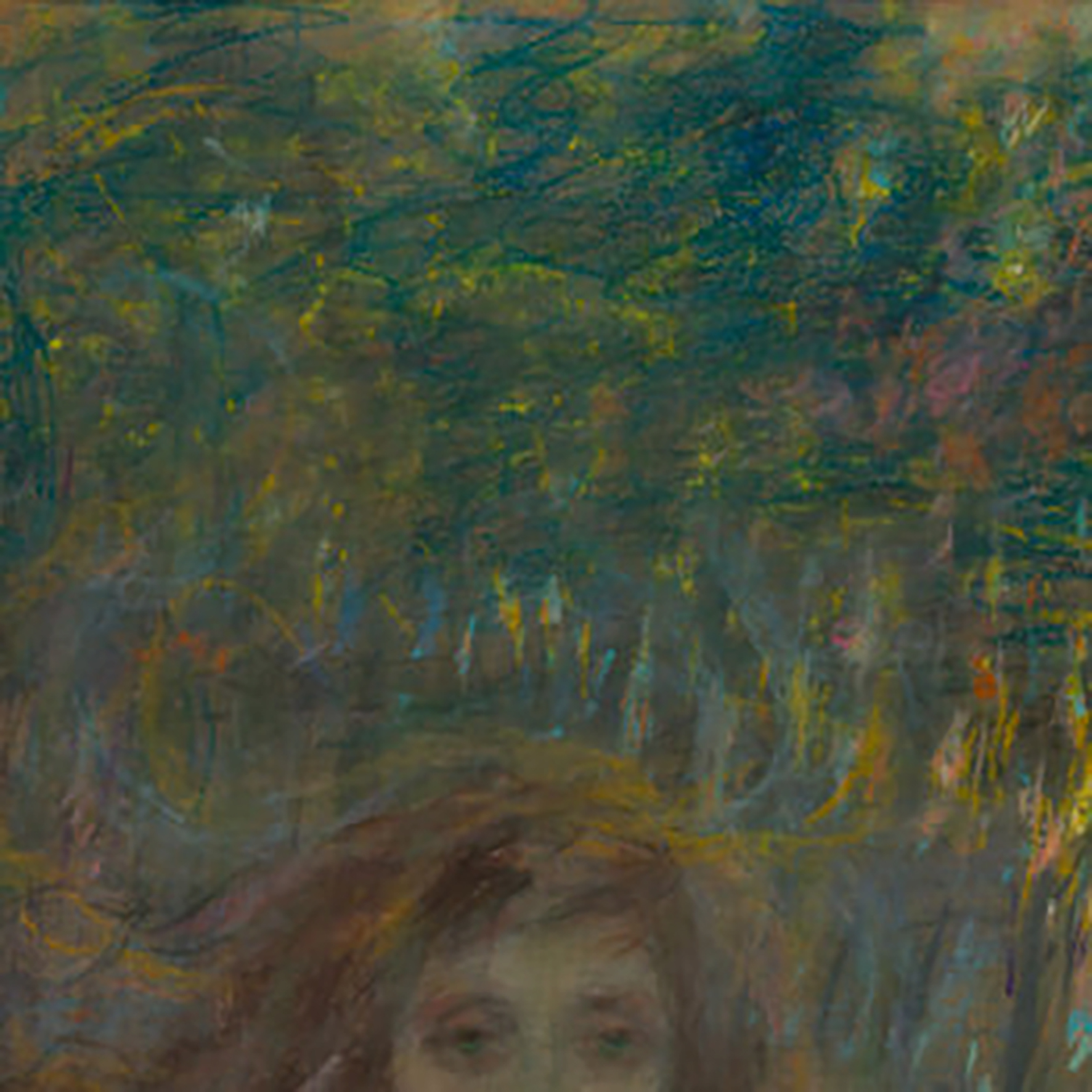 This appears to be the first major release for this long-running (if fitful) Pye Corner Audio side project, as Martin Jenkins' previous albums under this alias have all been limited CD-Rs. It certainly feels like a suitably strong statement for such an occasion. In the words of Ecstatic, Spectral Corridor "treads the line between occult soundtrack and zonked out space jam," which is a fairly apt characterization of Jenkins' latest aesthetic evolution even if it does not quite do justice to the sublime beauty of some of these pieces. According to Jenkins, this project draws its inspiration from "field recordings of walks through forests wielding finger chimes, long slow tape loops, treated guitars, elegiac organ tones, free running oscillator banks and chance operations," which mostly translates into slowly pulsing drones, subtle psychedelic touches, and a pervading air of shadowy mystery. That said, Spectral Corridor sounds considerably different from its more lush 2013 predecessor Bucolica, as Jenkins clearly took the "spectral" part of the album title very seriously, distilling his synth-centric ambient/drone to a wonderfully haunted-sounding and elegantly brooding suite of gently phantasmagoric soundscapes.
This appears to be the first major release for this long-running (if fitful) Pye Corner Audio side project, as Martin Jenkins' previous albums under this alias have all been limited CD-Rs. It certainly feels like a suitably strong statement for such an occasion. In the words of Ecstatic, Spectral Corridor "treads the line between occult soundtrack and zonked out space jam," which is a fairly apt characterization of Jenkins' latest aesthetic evolution even if it does not quite do justice to the sublime beauty of some of these pieces. According to Jenkins, this project draws its inspiration from "field recordings of walks through forests wielding finger chimes, long slow tape loops, treated guitars, elegiac organ tones, free running oscillator banks and chance operations," which mostly translates into slowly pulsing drones, subtle psychedelic touches, and a pervading air of shadowy mystery. That said, Spectral Corridor sounds considerably different from its more lush 2013 predecessor Bucolica, as Jenkins clearly took the "spectral" part of the album title very seriously, distilling his synth-centric ambient/drone to a wonderfully haunted-sounding and elegantly brooding suite of gently phantasmagoric soundscapes.
The album opens with a plinky yet insistent drum machine pattern that is quickly joined by a seesawing pulse of deep drones. Eventually, the piece ("Tone Intervals") gets fleshed out with warmer harmonies, submerged melodic fragments, and a woozily oscillating thrum. It is a perfectly executed slow burn, as Jenkins masterfully weaves together a handful of simple themes into a hypnotically swaying reverie that slowly builds in intensity and rhythmic complexity. For that one piece, Jenkins seems like he is operating on a plane of inventive minimalism that few others can touch, as the purring, quavering, and gently heaving rhythm elevates a good piece into quite a great one. The following "Spectral Corridor Part 4" is another highlight, albeit a very different and far more dramatic one. For me, it evokes a cold sky full of eerily pulsing and twinkling stars, but it also sounds like some killer early '70s space synth guy scoring a film about a macabre bit of forest folklore. Yet another gem is the tenderly languorous dreamscape "Quadratic," which unfolds like warm waves lapping the shore of an enchanted grotto. It is by far the most nakedly beautiful piece on the album and feels like a perfectly crafted loop that could extend forever, but Jenkins also performs some neat textural sleight of hand, as it steadily takes on a more hissing and quivering character as it folds. To my ears, the rest of the album does not quite hit the same heights, but it is impressively solid nonetheless, as Jenkins alternates between more minimal drone pieces and something akin to Tangerine Dream scoring a scary and intense film set in a space station or futuristic city (a description that applies to much of the four-part title suite). Fans of retro-futurist synth atmospheres will especially dig the latter, as that is one realm where Jenkins truly excels.
Samples can be found here.
Read More
- Anthony D'Amico
- Albums and Singles
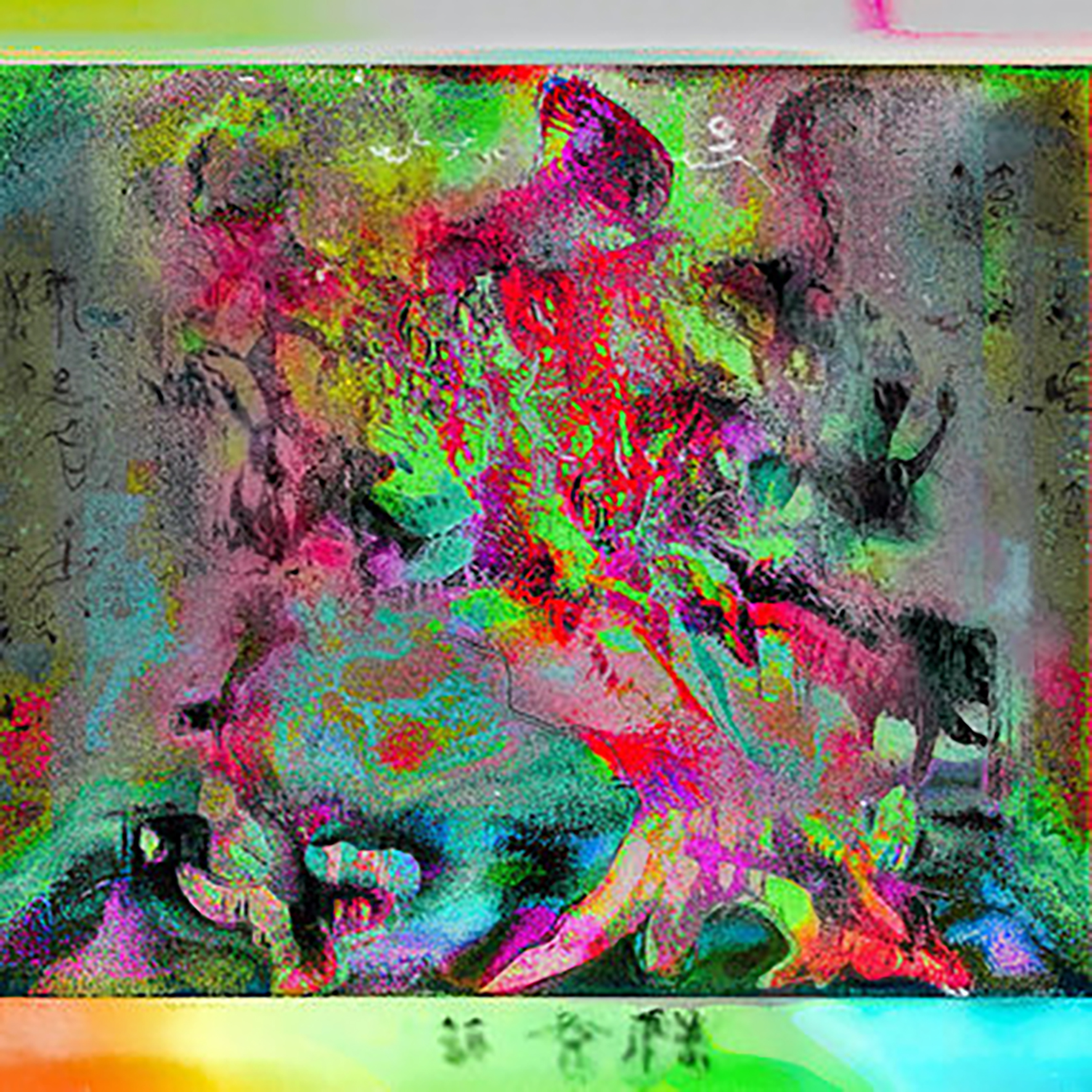 Unraveling the discography and line-up mutations of this Ho Chi Minh City-based collective turned out to be quite an unexpected challenge, as they have been releasing full-lengths and EPs since at least 2014, yet this latest album is being billed as the project's debut. I thought this might be the first release with "collective" appended to the group's name, but that is not the case either. That said, the project now appears to be a trio consisting of original members Phạm Thế Vũ and Jung Buffalo, as well as relatively recent addition Zach Schreier (who ostensibly composed much of the album). In any case, this latest release bears little stylistic resemblance to several of RCD's previous releases. Much of that is likely due to the involvement of Berlin-based producer Ziúr, who alternately punched up the songs to Subtext's exactingly high standards, "reduced them to a cinder," or "beamed them into the fifth dimension." Regardless of how this album took shape, it is quite a dazzling and deliriously kinetic achievement, resembling a freewheeling Carl Stone-esque plunderphonic tour de force of shapeshifting Vietnamese cultural fragments.
Unraveling the discography and line-up mutations of this Ho Chi Minh City-based collective turned out to be quite an unexpected challenge, as they have been releasing full-lengths and EPs since at least 2014, yet this latest album is being billed as the project's debut. I thought this might be the first release with "collective" appended to the group's name, but that is not the case either. That said, the project now appears to be a trio consisting of original members Phạm Thế Vũ and Jung Buffalo, as well as relatively recent addition Zach Schreier (who ostensibly composed much of the album). In any case, this latest release bears little stylistic resemblance to several of RCD's previous releases. Much of that is likely due to the involvement of Berlin-based producer Ziúr, who alternately punched up the songs to Subtext's exactingly high standards, "reduced them to a cinder," or "beamed them into the fifth dimension." Regardless of how this album took shape, it is quite a dazzling and deliriously kinetic achievement, resembling a freewheeling Carl Stone-esque plunderphonic tour de force of shapeshifting Vietnamese cultural fragments.
The title of this album roughly translates "Sleeping Through the Apocalypse," which is a colorful yet remarkably apt description of the trio's dizzying and disorienting vision. The "sleep" part is a bit misleading though, as this album more closely evokes the troubled, jumbled, and cacophonous dreams of an overstimulated and media-saturated mind in an increasingly unraveling world. In more concrete terms, that means the album is a hyper-caffeinated maelstrom of surreal collisions and transformations. I tend to loathe most releases that could be described as "aggressively genre-defying" or "like _____ in a blender," but there is a coherent overarching "sound collage" vision here that weaves all of those jarring shifts into a churning and warping near-masterpiece of mindfuckery. Given that, trying to accurately describe even a single song is hopeless, as my notes are filled with phrases like "the most incredible Terry Riley song ever just became Vietnamese cloud rap karaoke." The closing "Đme giựt mồng" that I just described is one of the album's stone-cold gems, but there are quite a few other highlights to be found as well. Some other favorites are "Aztec Glue" ("dreamy pulsing synth reverie gets violently interrupted by an in-the-red Ben Frost remix") and pair of pieces that feel like they could be the work of a supernaturally possessed radio ("Eri Eri…" and "Infinite"). The former sounds like a deranged pile of overlapping stations or Carl Stone at his most kaleidoscopic and unstable, but the collective further spice things up with psychotically shifting speeds and an unexpectedly rapturous crescendo. "Infinite," on the other hand, sounds like Vietnamese dance pop chopped and stretched into a stammering nightmare. The stammering is especially impressive, as the piece sometimes feels like a cacophony of the world's airwaves is organically shaping into pulsing rhythms. At other times, the album calls to mind free jazz, whale songs, or Popul Vuh and absolutely all of it is vividly fried, as this album is a gleefully shapeshifting feast of wide-ranging and inspired ideas from start to finish. In fact, it feels favorably like channel-surfing through like a dozen different cool albums at once. This is instantly one of my favorite albums in the Subtext canon.
Samples can be found here.
Read More
- Anthony D'Amico
- Albums and Singles
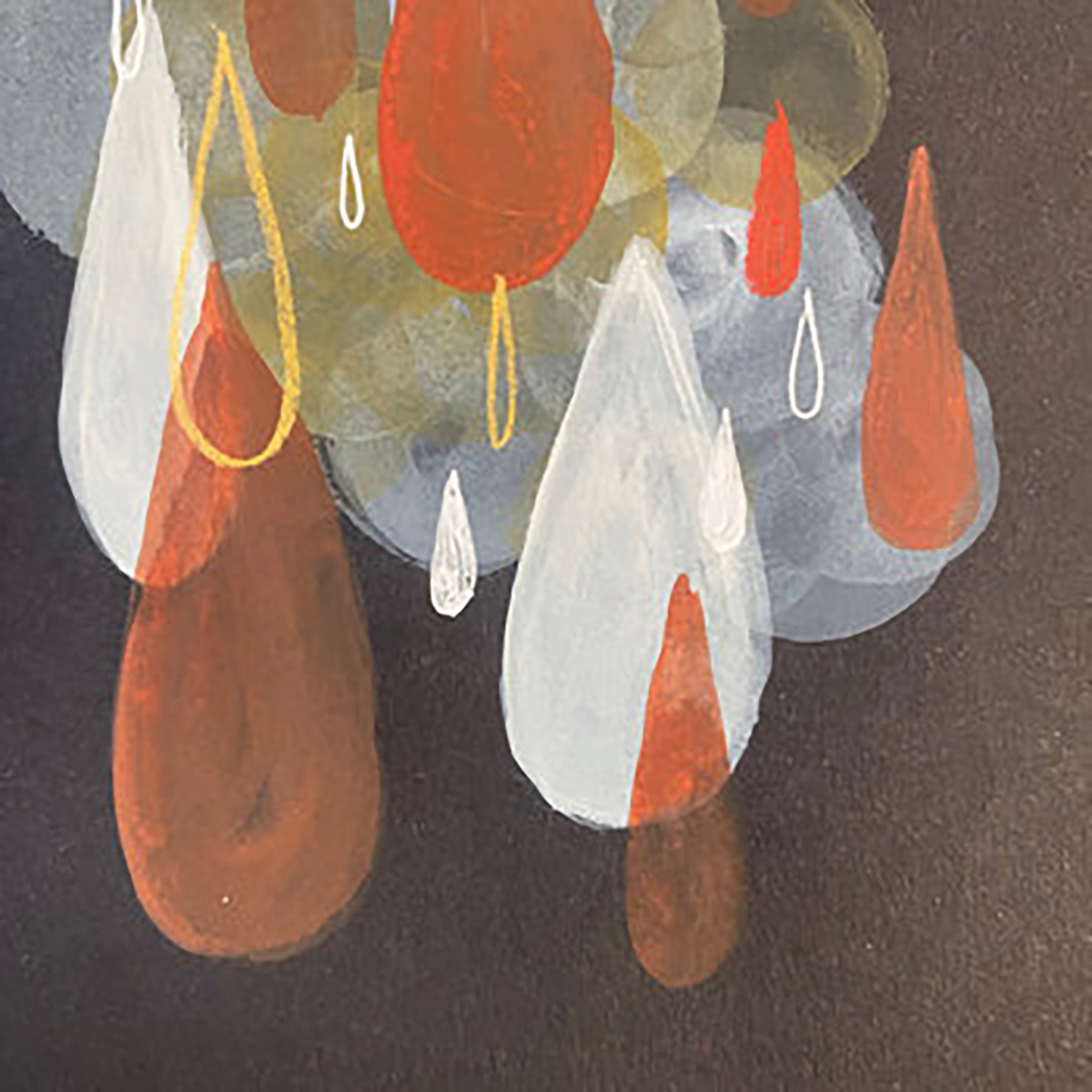 As alluded to in its title, Dispatches from the Drift is something of an accidental album, as it is a collection of keyboard improvisations that Tara Jane O'Neil informally recorded during the pandemic lockdown that were never intended for release. In fact, many were casually recorded on her phone and most "were promptly forgotten," but O'Neil happened to stumble back upon them while digging around for fragments of inspiration that could blossom into fully formed songs. These are not the ones met that criteria. but they amount to something similarly wonderful. As O'Neil herself puts it, these pieces are the ones that "were not looking for a form or seeking to be known," so she decided to present them as they were without further polishing or embellishment ("complete, traveling pieces that resolve or simply end"). In lesser hands, such an album would feel like a series of unfinished sketches, but O'Neil's instincts regarding this experiment are remarkably unerring. For the most part, the "keyboard improvisations" origin ensures that the album tends to linger in pleasantly blurred "ambient" territory, but there are quite a few striking surprises lurking here too (some very "dreampop" and some considerably more outré). The entire album is quite a leftfield delight though, as it feels every bit as strong as O'Neil's more formal work. Her inspiration simply took a different shape this time around.
As alluded to in its title, Dispatches from the Drift is something of an accidental album, as it is a collection of keyboard improvisations that Tara Jane O'Neil informally recorded during the pandemic lockdown that were never intended for release. In fact, many were casually recorded on her phone and most "were promptly forgotten," but O'Neil happened to stumble back upon them while digging around for fragments of inspiration that could blossom into fully formed songs. These are not the ones met that criteria. but they amount to something similarly wonderful. As O'Neil herself puts it, these pieces are the ones that "were not looking for a form or seeking to be known," so she decided to present them as they were without further polishing or embellishment ("complete, traveling pieces that resolve or simply end"). In lesser hands, such an album would feel like a series of unfinished sketches, but O'Neil's instincts regarding this experiment are remarkably unerring. For the most part, the "keyboard improvisations" origin ensures that the album tends to linger in pleasantly blurred "ambient" territory, but there are quite a few striking surprises lurking here too (some very "dreampop" and some considerably more outré). The entire album is quite a leftfield delight though, as it feels every bit as strong as O'Neil's more formal work. Her inspiration simply took a different shape this time around.
The album unexpectedly opens with a tenderly lovely piece that feels like a great would-be single, as the watery, quavering arpeggios and hushed vocals of "A Sunday 2020" feel plucked from a great This Mortal Coil album. No other piece on the album revisits that particular territory, which is not surprising, as O'Neil notes that it is the one exception where she embellished the original take (with some subtle guitar). She opted to include it anyway, however, as both the vocals and the keyboard part were improvised enough to give it thematic consistency with the rest of the pieces. It also highlights an endearing thread that runs through the album, as Dispatches from the Drift seamlessly mingles warm nostalgia for a particular era of music with contemporary flourishes and a dreamlike timelessness that make everything feel fresh and pleasantly unfamiliar. Moreover, O'Neil is impressively freewheeling in her stylistic inspirations. Sometimes the album sounds like a lost recording from Eno's Apollo sessions, while other times it resembles one of Warren Defever's teenage tapes, an out-of-phase accordion drone piece, a prog-minded bagpipe collective, or a traditional folk ensemble experimenting with Slowdive's gear. In every case, the results are invariably compelling. To my ears, the strongest piece is "Wind With Dog," which is a wonderfully woozy and bittersweetly gorgeous feast of dancing, quivering melodies and ghostly overtones. Elsewhere, O'Neil channels squirming heavy psych drones ("It's Been A Long Time"), a tropical steel drum band trying their hand at ceremonial trance music ("Ventura Tuesday"), and something akin to a stark, tremelo-heavy cover of a lovesick torch song. Naturally, there is an informality and unpredictably loose structure to all of these pieces given their spontaneous origins, but that intimate, imperfect, and searching feel generally suits them just fine. And sometimes I am even ambushed by something that feels like a wonderful premeditated set piece, such as when a haze of decaying notes forms a complex swirl of oscillations. The beauty of the album is that none of those cool textural or harmonic surprises here were planned, as O’Neil essentially tricked herself into approaching music in an entirely different and instinctual way and plenty of happy accidents ensued. In some ways, that approach makes it hard to point to any individual piece as a fully articulated and focused glimpse of perfection, but the album's warmly beautiful soft-focus mood and unexpected twists and turns add up to an unusually inspired, lovely, and immersive whole.
Samples can be found here.
Read More
- Anthony D'Amico
- Albums and Singles
 When I first found out about this album, I was not quite sure how to feel about its ambitious structural premise, as the idea of a vinyl record with 112 locked grooves felt suspiciously like a willfully annoying conceptual art statement. That said, I am unable to ever resist the allure of a killer drummer in an indulgent mood, so I was still quite eager to hear what Sartorius had planned for his unique format. My first impression was a favorable one, as I have been on a bit of a Niagara bender and the shifting beat patterns here called to mind a slowed and deconstructed kindred spirit to the tour de force of "Sangandongo." My next impression was mild exasperation, as I was not thrilled that every amazing beat lasted a mere minute before giving way to something new. That revealed the appeal of the physical release though, as this album is packed full of hypnotic rhythms that would make absolutely trance-inducing infinite loops. Naturally, that opens up a host of compelling interactive ways to experience the album, as it is a Pandora's box of multifarious percussive delights. To some degree, I expected something in that vein (as far as gimmicks go, this is a very cool and well thought-out one), but I was still blindsided by both the sheer imagination of Sartorius's rhythms and the way the album as a whole feels like a transcendent psychedelic epic by the end. As La Monte Young and others have decisively proven, sustained immersion in a very insistent and focused vision can feel like a remarkably profound and mind-rewiring experience.
When I first found out about this album, I was not quite sure how to feel about its ambitious structural premise, as the idea of a vinyl record with 112 locked grooves felt suspiciously like a willfully annoying conceptual art statement. That said, I am unable to ever resist the allure of a killer drummer in an indulgent mood, so I was still quite eager to hear what Sartorius had planned for his unique format. My first impression was a favorable one, as I have been on a bit of a Niagara bender and the shifting beat patterns here called to mind a slowed and deconstructed kindred spirit to the tour de force of "Sangandongo." My next impression was mild exasperation, as I was not thrilled that every amazing beat lasted a mere minute before giving way to something new. That revealed the appeal of the physical release though, as this album is packed full of hypnotic rhythms that would make absolutely trance-inducing infinite loops. Naturally, that opens up a host of compelling interactive ways to experience the album, as it is a Pandora's box of multifarious percussive delights. To some degree, I expected something in that vein (as far as gimmicks go, this is a very cool and well thought-out one), but I was still blindsided by both the sheer imagination of Sartorius's rhythms and the way the album as a whole feels like a transcendent psychedelic epic by the end. As La Monte Young and others have decisively proven, sustained immersion in a very insistent and focused vision can feel like a remarkably profound and mind-rewiring experience.
I listened to this album in its digital form, which doubtlessly provided a radically different experience than the vinyl. Nevertheless, the building blocks are identical, as each numbered piece is essentially a 1.8 second loop allowed to play out for exactly one minute and one second. Each piece segues seamlessly into the next with no space in between and all feel like they are roughly the same tempo, so the whole album has a hypnotically consistent flow. At first, the beats seem cool but fairly straightforward, but indications that Sartorius has something more ambitious in mind begin to appear quickly, as he starts sneaking increasingly adventurous sounds, patterns, and flourishes into the insistent pulse. I believe I was first hooked by skittering, off-kilter rhythm of the fourth piece, but that loop was soon eclipsed by even more killer beats, which themselves became eclipsed by still others as the album unfolded. It is hard to nail down an overarching pattern to the sequencing, but there are occasional runs where Sartorius unleashes a flurry of dazzling loops in rapid succession and it all seems to cumulatively build into something wonderful.
Part of the album's brilliance is that those clusters tend to all be compelling for different reasons, as sometimes Sartorius works in a virtuosic fill, while other times he locks into an especially lurching, tumbling, or downright weird time signature without the slightest dip in the album's propulsive forward motion. Sometimes it feels like I am being swept along by a tide, while other times it feels I am descending like an almost ritualistic rhythmic trance, which is an impressive feat for an album this ostensibly one-dimensional and purposely fragmented. Notably, Sartorius used a "prepared" drum kit, which enables a surprisingly varied range of sounds and levels of textural complexity. For example, "Locked Groove 084" feels like a killer hip-hop beat tape, while "Locked Groove 051" feels like it could be plucked from a Sublime Frequencies album and "Locked Groove 047" sounds like a futuristic industrial banger. Other times, Sartorius locks into something that feels like Indian techno, a free jazz drummer going wild in a junkyard, or something absolutely alien-sounding, like the gurgling and clanging "Locked Groove 011." Anyone looking for a great drummer showcasing a wildly imaginative array of beats will not be disappointed here, yet I was most surprised by how masterfully Sartorius overshot that mark to craft something considerably larger than the sum of its parts. Sartorius's stated goal was that "listeners will experience these compositions like they would explore a painting," and he succeeded far beyond my expectations in that regard. Locked Grooves is a deliciously rich vein that succeeds both as a whole and as a collection of compelling fragments that can be isolated and recontextualized into something equally fascinating. As far as solo drummer albums go, Locked Grooves is high art that masterfully raises the bar for what is possible.
Samples can be found here.
Read More
- Anthony D'Amico
- Albums and Singles
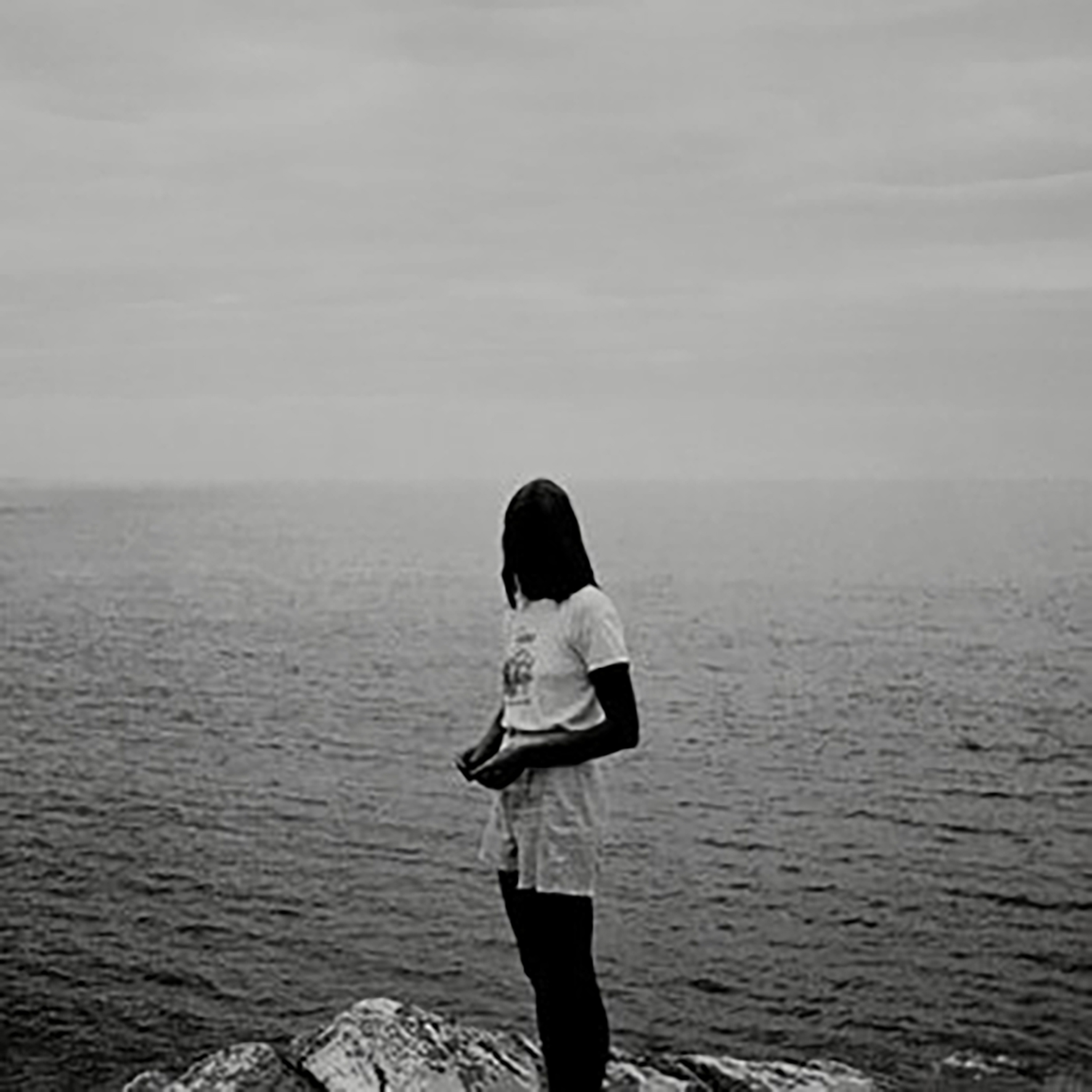 This latest album from Madeline Johnston takes its title from a forensic chemical that emits a blue glow when it comes in contact with blood at a crime scene. That macabre yet beautiful transformation provides the album's guiding metaphor, as Johnston attempts the similar feat of "turning trial and tribulation into sources of light." That is thematically familiar Midwife territory, of course, but Luminol feels like the beginning of a new phase stylistically, as these songs are simultaneously more anthemic and more starkly minimal than the project’s previous fare. While that is not necessarily an unstable combination, Johnston does tone down her artier tendencies to fitfully showcase a newfound love of tighter songcraft and hard rock-inspired swagger. That approach suits her unexpectedly well, as some of the better moments of Luminol resemble a hiss-ravaged shoegaze deconstruction of a power ballad by someone like Lita Ford, Pat Benatar, or Joan Jett, which is certainly something I was not expecting to encounter here. Luminol is definitely more of an straightforward "rock" record than I anticipated. For the most part, however, Johnston’s hazy, slow-motion, and abstracted homages to ‘80s and ‘90s rock radio work quite well, as this album seems to have instantly become a fan favorite. Some fans of previous albums will likely miss Midwife's sharper edges, but I suspect most will warm to this more punchy and comparatively playful side of Johnston's art.
This latest album from Madeline Johnston takes its title from a forensic chemical that emits a blue glow when it comes in contact with blood at a crime scene. That macabre yet beautiful transformation provides the album's guiding metaphor, as Johnston attempts the similar feat of "turning trial and tribulation into sources of light." That is thematically familiar Midwife territory, of course, but Luminol feels like the beginning of a new phase stylistically, as these songs are simultaneously more anthemic and more starkly minimal than the project’s previous fare. While that is not necessarily an unstable combination, Johnston does tone down her artier tendencies to fitfully showcase a newfound love of tighter songcraft and hard rock-inspired swagger. That approach suits her unexpectedly well, as some of the better moments of Luminol resemble a hiss-ravaged shoegaze deconstruction of a power ballad by someone like Lita Ford, Pat Benatar, or Joan Jett, which is certainly something I was not expecting to encounter here. Luminol is definitely more of an straightforward "rock" record than I anticipated. For the most part, however, Johnston’s hazy, slow-motion, and abstracted homages to ‘80s and ‘90s rock radio work quite well, as this album seems to have instantly become a fan favorite. Some fans of previous albums will likely miss Midwife's sharper edges, but I suspect most will warm to this more punchy and comparatively playful side of Johnston's art.
The album's release was preceded by a pair of singles that beautiful illustrate two of the divergent stylistic directions in this somewhat transitional-feeling phase. My favorable is the ultra-minimal slow burn of the opening "God is a Cop," which is based upon little more than a descending keyboard melody and a repeating, hiss-soaked refrain of "I can't kill the evil thoughts." Eventually Johnston expands upon those lyrics, but the most impressive facet of the piece is how she creates such a perfect simmering tension that every newly added note or embellishment feels like a glimpse of a tightly restrained underlying storm. The closing "Christina’s World" is similarly minimal, but feels unexpectedly radiant and gospel-inspired, as it builds to a repeating group refrain of "show me the way" over some simple piano chords (though it is spiced up with some winding harmonized guitar parts in the periphery). In between those two poles of dark and light lie a curious array of emotional shades and varying degrees of greatness.
The more accessible end of the spectrum is represented by the slowly chugging "Enemy" (akin to a shoegaze-damaged mutation of '90s grunge) and another uplifting piano-driven piece in the vein of "Christina’s World" ("Promise Ring"). The latter has some appealing twists though, as Johnston sweetly sings "love will break your heart forever" like a fatalist mantra while a cool undercurrent of trippy guitars gradually intensifies. It also features some very "hard rock" riff flourishes that are amusingly effective. Aside from "God is a Cop," the strongest piece is probably the sole throwback to Midwife's earlier seething intensity, "Colorado," which uses the mantric repetition of a couple of rueful phrases as a foundation for killer guitar pyrotechnics somewhere between Pink Floyd and grinding noise. Elsewhere, "2020" is the most fascinating piece, as Johnston jacks a chorus from The Offspring to approximate Joan Jett-style pop on a sleazy, druggy bender. It sounds like the imaginary band that would be playing at an extremely hip club in an arty, neon-soaked cult film, which is a very cool niche to land in. It also makes me wonder if there are other layers of pop culture appropriation happening elsewhere, as Luminol may very well be a bittersweet love letter to the ambient sounds of Johnston's past (she notes at another point that she is "born to run," for example). Than again, maybe I am projecting all of that. In any case, Luminol is yet another solid album from Midwife. It does not quite rank among my personal pantheon of stone-cold Midwife masterpieces, but the great moments remain as powerful as ever.
Samples can be found here.
Read More

